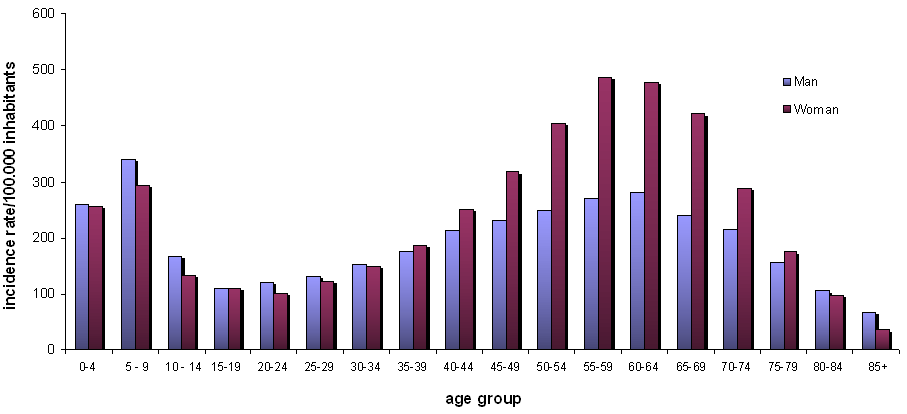-
-
-
-
-
-
-
-
Tools and collections
- Environmental atlas
- EIONET in Slovenia
- Environmental indicators
- IED devices
- Endangered species
- IS-waste

-
-
Tools and collections
- Environmental atlas
- EIONET in Slovenia
- Environmental indicators
- IED devices
- Endangered species
- IS-waste

- Home
- Human health and ecosystem resilience
- Lyme borreliosis
[ZD25] Lyme borreliosis

Key message

Lyme borreliosis (LB)is the most common vector - transmitted infectious disease(diseases transmitted by vectors)in Slovenia. In the period 2003-2012 Slovenia registered from 3,000 to over 6,000 patients with LB. Since registration of LB is obligatory according to the national law the incidence rate is increasing in Slovenia and is one of the highest in comparison to EU and even USA. The increase in applications is no doubt a reflection of better recognition of disease, awareness of the general population and other biotic and abiotic factors whose impact is difficult to assess. We assume that lifestyle (retention in environments where is possibility of infection higher) is even more important than the density of ticks and environmental factors. OF course, this will have to be defined by research studies. Over the past decade it is obvious that increase in the incidence rates of LB is caused by climate change. The main reason is the increase in the average air temperature.
Definition
Charts
National Institute of Public Health of RS, 2003-2013
| 2003 | 2004 | 2005 | 2006 | 2007 | 2008 | 2009 | 2010 | 2011 | 2012 | ||
|---|---|---|---|---|---|---|---|---|---|---|---|
| reported cases | number of reported cases | 3446 | 3707 | 3995 | 4364 | 3773 | 5092 | 6220 | 4917 | 5552 | 4943 |
National Institute of Public Health of RS, 2004-2013.
| 0-4 | 5 - 9 | 10 - 14 | 15-19 | 20-24 | 25-29 | 30-34 | 35-39 | 40-44 | 45-49 | ||
|---|---|---|---|---|---|---|---|---|---|---|---|
| Sex - Total | Incidence rate/100.000 inh. | 257. 65 | 317. 72 | 151. 20 | 109.3 | 111.6 | 127.7 | 150.1 | 180 | 231.1 | 273.3 |
| Man | Incidence rate/100.000 inh. | 259.3 | 340.6 | 167.1 | 109.3 | 120.2 | 132.4 | 151.5 | 174.8 | 212.2 | 231 |
| Woman | Incidence rate/100.000 inh. | 256 | 293.4 | 134.4 | 109.4 | 102.3 | 122.5 | 148.4 | 185.5 | 250.9 | 317.6 |
| 50-54 | 55-59 | 60-64 | 65-69 | 70-74 | 75-79 | 80-84 | 85+ | Starost - SKUPAJ | |||
| Sex - Total | Incidence rate/100.000 inh. | 325.2 | 377.8 | 381.5 | 338.1 | 255.9 | 167.8 | 99.5 | 42.7 | 227.1 | |
| Man | Incidence rate/100.000 inh. | 249.1 | 270.7 | 279.8 | 241.6 | 214.4 | 156.5 | 105.6 | 68 | 201.5 | |
| Woman | Incidence rate/100.000 inh. | 405.3 | 487.3 | 477.3 | 420.5 | 286.9 | 174.7 | 97.2 | 35 | 251.8 |
Goals
Comment
Methodology
Maja Sočan, PhD, dr. med., National Institute of Public Health of RS, Mateja Blaško Markič, dipl. san. ing., National Institute of Public Health of RS








